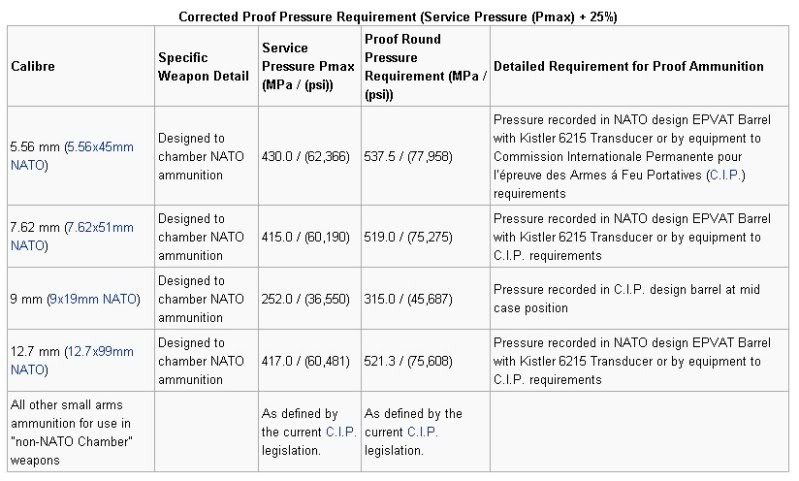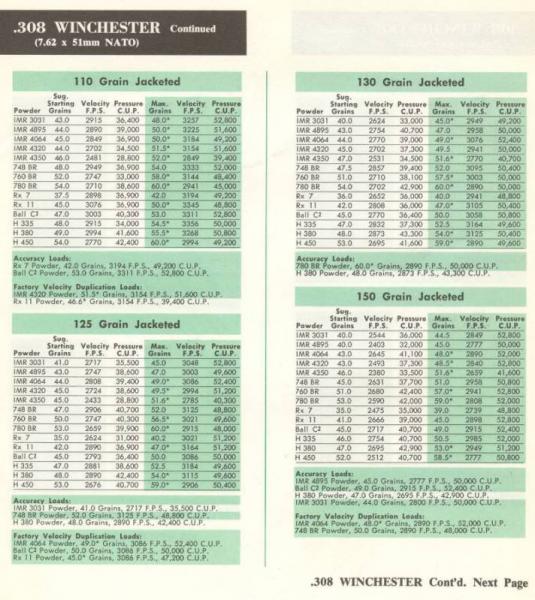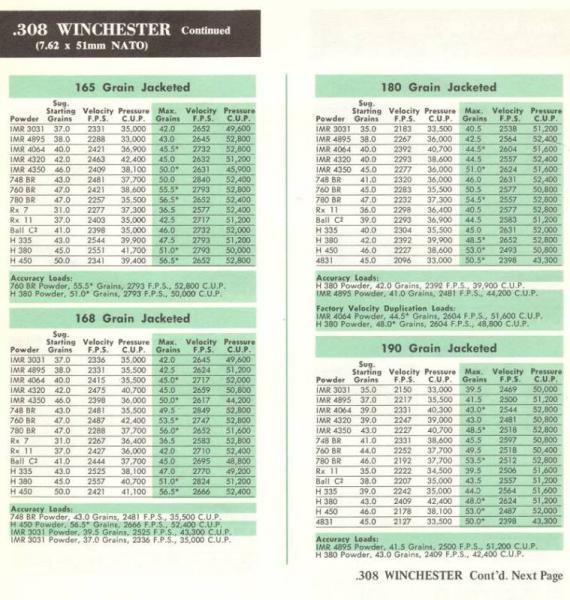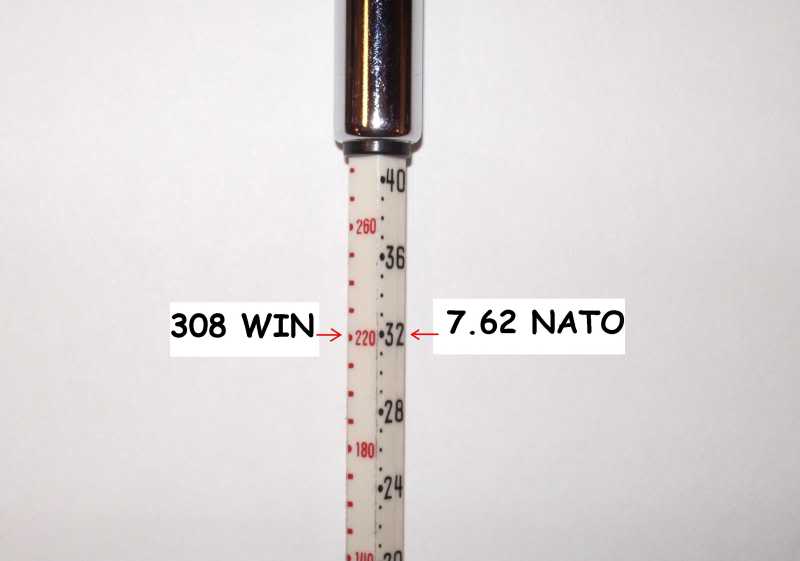-
Legacy Member

Link To Villiers Yarnwood post
Based on the following I suspect the rifle is NOT proofed for .308 Winchester.
A cut and paste of the post
Note: No photos of the proofs are shown and his post says 7.62MM and BMP proof and no other markings. He does not indicate it says .308. In fact he says no other markings.
Quote from Villiers post
Have just finished refurbishing the latest acquisition:
LE No. 5 Mk. 1, 7.62mm / 308 Charnwood Ordnance conversion, drilled & threaded bolt handle, original bolt number filed off. Charger insert for .308, Enfield 10 round magazine marked CR 141A. Correct length, shortened LE No. 4 Mk. 1 fore-end with plugged groove under the barrel. Long No. 5 buttstock (top marked „L“) is more then one inch longer than standard No. 5 buttstock. Original No. 5 lightened action without electropencil factory markings, stamped „CARBINE 7.62 mm CO 00010“. No other stamps apart from BMP proofmark.
Think the next step might be a "hung trigger" conversion with a shortened No. 4 Mk. 2 fore-end and a fore-end cap.
Attached Thumbnails
Click image for larger version Name: P4260003.jpg Views: 102 Size: 86.4 KB ID: 4367
Last edited by ireload2; 06-24-2009 at 03:50 PM.
-
Thank You to ireload2 For This Useful Post:
-
06-24-2009 03:47 PM
# ADS
Friends and Sponsors

-
-
-
Legacy Member

#4Mk1(T)
Villiers stated his rifle was marked .308 in this thread.
In this thread he stated that some posters were posting latrine rumors.
In another thread he stated that it is marked 7.62.
The two rounds have different proofing pressures.
You can go read that thread for yourself. Read the evidence.
As you know in the collecting world you buy the gun and not the story.
If there is provenance it is reasonable to back up a story.
If there is no provenance it remains only a story.
Last edited by ireload2; 06-24-2009 at 06:51 PM.
-
-
Banned

No.1 actions were considered safe only to the 303
British
pressure loadings therefor it was not recommended to be converted to the Epps. The No.4 handles loads comparable to 308Win, while the No3 handles hotter loads that are considered by most dangerous in a No.4. Why? Because the action, just like the Remington M700, can handle running ammunition that is pushing the 60,000PSI range, just like lets say the new Winchester Short (and Super Short) Magnums or the Remington Ultra Mags do.
Are you serious? Max allowable pressure for .308 Winchester is higher than 60,000 PSI, that doesn't mean there are that many manufacturers who would knowningly load it to those pressures but theres a possibility of an owner buying ammo that passes the SAAMI specs and generates such pressures.
The British didn't consider MkVIIIZ safe for use in the No.4 except in emergency situations when other ammo was in short supply, and MkVIIIZ has a working pressure comparable to the max allowable SAAMI standard for .303 which is far lower than the max alowable for the .308.
If the low end of the 7.62 pressures already exceed max allowable for the 303 then how much safety margin would you have with max pressure .308 rounds that exceed max .303 pressures by more than 20%?
Since Villers refered to Laidlers statement on the rear sight pin I would naturally figure he meant his pin was damaged in the same way, the locking pin bent and sometimes sheared through by the receiver spreading.
I've seen more than a few No.4 actions with loose fit between the bolt and rear receiver and a gap between the rear sight mountings and the sight, and with bent locking pins, I'd always figured that for loose wartime tolerances, but Laidlers article makes it much more likely that these suffered damage from MkVIIIZ ammunition.
If Villiers No.5 is not subjected to 308 ammunition loaded to the highest pressure levels there may never be a problem with it, but if he used max .308 loads for thousands of shots there very well might be damage to rifle even under the best of conditions much less under wartime conditions.
If .308 loads that do not greatly exceed max pressures allowed for the .303 are used then ability to handle those loads is no indicator that the rifle would be safe with max .308 loads.
Such a conversion holds no attraction for me. Though I'd know that it was not suitable for max loads the rifle might end up in the hands of one of my family years after I'm gone and in much worse condition than now, if max pressure .308 or old 7.62 LMG ammo not marked as such was all that was available then it would be an accident in the making.
Now I ask again , would any here load .303 ammunition to 62,000 PSI and sell it as safe for use in No.4 rifles?
-
Banned


Originally Posted by
ireload2

Link To Villiers Yarnwood post
Based on the following I suspect the rifle is NOT proofed for .308 Winchester.
A cut and paste of the post
Note: No photos of the proofs are shown and his post says 7.62MM and BMP proof and no other markings. He does not indicate it says .308. In fact he says no other markings.
Quote from Villiers post
Have just finished refurbishing the latest acquisition:
LE No. 5 Mk. 1, 7.62mm / 308 Charnwood Ordnance conversion, drilled & threaded bolt handle, original bolt number filed off. Charger insert for .308, Enfield 10 round magazine marked CR 141A. Correct length, shortened LE No. 4 Mk. 1 fore-end with plugged groove under the barrel. Long No. 5 buttstock (top marked „L“) is more then one inch longer than standard No. 5 buttstock. Original No. 5 lightened action without electropencil factory markings, stamped „CARBINE 7.62 mm CO 00010“. No other stamps apart from BMP proofmark.
Think the next step might be a "hung trigger" conversion with a shortened No. 4 Mk. 2 fore-end and a fore-end cap.
Attached Thumbnails
Click image for larger version Name: P4260003.jpg Views: 102 Size: 86.4 KB ID: 4367
So theres no way of knowing when the bolt body was installed or why.
Theres the possibility that the previous owner damaged its bolt firing max level .308 and had to replace it.
I'll check on the replacement of parts damaged during proof firing, I don't think they allowed replacement of bolt bodies unless they then re-proofed with the repaired bolt.
-
Banned


Originally Posted by
No4Mk1(T)

I’ve tried to keep my nose out of this one but this thread is starting to make my head hurt.
I am a firm believer in free speech but you people do realize you arguing (this is no longer a discussion or even a debate) about a now obsolete rifle?
As you can tell by my online name I collect Enfields. Not much of a secret. I don’t collect them because they were the best bolt action rifle ever or the strongest but because they are a huge part of 20th century world history.
Thats pretty much my interest in them as well.
I don't expect more from any rifle than it was designed to deliver.
The Lee Enfield was used on every continent and has killed more creatures, human and game, both good and bad, than almost any other rifle because the
British
empire spanned such a large area at one time.
Are there rifle designs contemporary to the Lee Enfield that can handle higher pressures? Of course. However with the millions of Enfields produced if the problem of week design were as bad as is being portrayed here we would see weekly reports of failures even now. And this comment extends to the L39-L42 series of 7.62mm NATO rifles as well.
As the Ross Debates made clear those failed rifles never made it to the newspapers, and even the case of a known fatality was not big news.
Such firearms accidents are not world news, and are seldom even investigated unless criminal neglegance is suspected, or product liability suits are brought.
I've still seen no results of any investigation into why that SARCO 6mm Lee blew up, just vague third hand reports of flattened primers.
Simply put the design was adequately strong for the intended purpose.
No argument there, my point is the rifle has a slim margin of safety at best, and that margin should not be exceeded even with rifles in like new condition, much less 60-100 yr old warhorses already subjected to unknown abuses.
-
Banned

-
Legacy Member

You still have not clearly stated the exact proof pressure in PSI by transducer method for the .308 Winchester as proofed in the US.
The US sources are the standard for the .308 Winchester cartridge since it is a Winchester design.
It is also commonly know that shooting .308 Winchester ammo in 7.62 Nato firearms is not
recommended.
Even your .303 British Expert says so at .303 British.com
Expert says so at .303 British.com
.303 British.com here
More here
Last edited by ireload2; 06-24-2009 at 08:51 PM.
-
-
Banned

-
Banned















 PM
PM



















